Covered pergolas set the stage for a captivating outdoor experience, offering a unique blend of style, functionality, and comfort. They transform ordinary outdoor spaces into inviting havens, providing shade from the sun, protection from the elements, and a sense of serenity that enhances relaxation and enjoyment.
Imagine a warm summer evening, a gentle breeze rustling through the leaves, and the soft glow of lights illuminating a beautifully crafted pergola. This is the essence of a covered pergola, a versatile structure that seamlessly blends with its surroundings, adding an elegant touch to any property.
Definition and Types: Covered Pergola
A covered pergola is a beautiful and practical addition to any outdoor space. It offers shade, protection from the elements, and a touch of elegance to your patio, garden, or backyard. Essentially, it’s a structure that combines the open-air appeal of a pergola with the added benefit of a roof, providing a versatile and comfortable outdoor living area.
Types of Covered Pergolas
The type of roof you choose for your covered pergola significantly impacts its functionality and aesthetics. Let’s delve into the different types available, exploring their advantages and disadvantages.
Retractable Roof Pergolas
Retractable roof pergolas offer the ultimate in flexibility. They feature a roof that can be extended or retracted with the help of a motor or manual crank system.
- Advantages: Retractable roofs provide maximum control over your outdoor space. You can enjoy the open-air experience on sunny days and retract the roof for shade or protection from rain. They are also ideal for creating a cozy ambiance at night, allowing you to stargaze or enjoy the moonlight.
- Disadvantages: Retractable roofs are typically more expensive than fixed roofs. They also require regular maintenance to ensure smooth operation and prevent damage. The motorized systems can be prone to malfunctions, and the retractable roof itself can be susceptible to damage from strong winds or heavy snow.
Fixed Roof Pergolas
Fixed roof pergolas offer a more permanent solution for covering your outdoor space. They feature a solid roof that remains in place, providing constant shade and protection from the elements.
- Advantages: Fixed roofs are generally more affordable than retractable roofs. They also offer greater stability and durability, making them ideal for areas with strong winds or heavy rainfall. The permanent roof structure can be customized with various materials, allowing you to create a unique and stylish design.
- Disadvantages: Fixed roofs lack the flexibility of retractable roofs. Once installed, they remain in place, limiting your options for enjoying the open air. They can also create a more enclosed feel, potentially reducing the natural light that reaches your outdoor space.
Hybrid Pergolas
Hybrid pergolas combine elements of both retractable and fixed roof systems. They often feature a fixed roof with a retractable section, offering a balance between flexibility and durability.
- Advantages: Hybrid pergolas provide a compromise between the advantages of retractable and fixed roofs. They offer shade and protection from the elements while still allowing you to enjoy the open air. The retractable section can be used to control the amount of sunlight entering your outdoor space, offering greater versatility.
- Disadvantages: Hybrid pergolas are typically more expensive than fixed roofs but less expensive than fully retractable systems. The combination of fixed and retractable elements can make the design more complex, potentially requiring more maintenance.
Materials and Construction
The construction of a covered pergola involves selecting appropriate materials and employing suitable techniques to create a sturdy and aesthetically pleasing structure. The choice of materials is crucial as it influences the durability, maintenance requirements, and overall appearance of the pergola.
Common Materials for Covered Pergola Construction
The most common materials used for covered pergola construction are wood, metal, and composite materials. Each material offers distinct advantages and disadvantages, influencing the final cost, longevity, and aesthetic appeal of the pergola.
- Wood: Wood is a classic and versatile material for pergola construction, offering a natural and warm aesthetic. It is relatively easy to work with and allows for intricate designs. However, wood requires regular maintenance, including staining or painting, to prevent rot and insect damage. Additionally, wood can be susceptible to warping and cracking in extreme weather conditions.
- Metal: Metal, particularly aluminum and steel, offers superior durability and weather resistance compared to wood. Metal pergolas are often lighter and require less maintenance. However, metal can be more expensive than wood and may require professional installation. Additionally, metal can become very hot in direct sunlight, making it uncomfortable to sit under.
- Composite Materials: Composite materials, such as vinyl or fiberglass, combine the benefits of wood and metal. They are durable, weather-resistant, and low-maintenance. Composite materials often mimic the appearance of wood, offering a natural aesthetic. However, they can be more expensive than traditional wood or metal pergolas.
Construction Techniques for Covered Pergolas
Different construction techniques are employed for covered pergolas, each offering unique advantages in terms of strength, aesthetics, and cost-effectiveness.
- Post-and-Beam Construction: This traditional technique uses upright posts and horizontal beams to create the framework of the pergola. It is a simple and straightforward method, suitable for both wood and metal pergolas. Post-and-beam construction offers flexibility in design and allows for customization.
- Truss Systems: Truss systems are used to create a strong and lightweight roof structure. They are particularly suitable for larger pergolas with wide spans. Truss systems often incorporate metal components, providing enhanced strength and durability.
- Modular Designs: Modular pergolas are prefabricated units that can be easily assembled on-site. This technique offers a faster and more efficient construction process, reducing labor costs. Modular designs are available in various sizes and styles, providing flexibility in choosing the desired pergola.
Design and Aesthetics
The aesthetic appeal of a covered pergola is paramount, as it significantly influences the overall ambiance and functionality of the outdoor space. The design style chosen for the pergola, the roof design, column style, and decorative elements all play a crucial role in shaping the overall aesthetic.
Design Styles
Different design styles cater to various preferences and architectural styles, each offering a unique visual appeal. Here are some popular design styles:
- Modern: Characterized by clean lines, minimalist design, and a focus on functionality. Modern pergolas often feature geometric shapes, sleek materials like aluminum or steel, and a simple, uncluttered design.
- Traditional: Inspired by classic architectural styles, traditional pergolas often feature ornate details, decorative elements, and natural materials like wood. They often have a more elaborate and intricate design, reflecting a timeless elegance.
- Rustic: Embrace the natural beauty of wood and often incorporate rough-hewn beams, reclaimed wood, and rustic finishes. Rustic pergolas exude a sense of warmth, comfort, and connection to nature.
- Contemporary: Blend modern and traditional elements, creating a sophisticated and stylish look. Contemporary pergolas often feature clean lines, bold colors, and unique materials, offering a modern twist on traditional design principles.
Roof Design
The roof design is a key element that defines the character and functionality of a covered pergola.
- Flat: Offers a clean and minimalist aesthetic, providing a wide, open space for shade. Flat roofs are often used in modern and contemporary designs.
- Gable: A classic roof design that provides excellent water drainage and adds a touch of traditional charm. Gable roofs are commonly found in traditional and rustic designs.
- Hip: A sloping roof design that provides all-around protection from the elements. Hip roofs are typically used in more elaborate designs, offering a sleek and sophisticated look.
- Vaulted: Creates a dramatic and spacious feel, adding height and grandeur to the pergola. Vaulted roofs are often used in larger pergolas, offering a sense of openness and elegance.
Column Style
The column style significantly influences the visual appeal and structural integrity of the pergola.
- Square: Offer a simple and modern aesthetic, providing a strong and stable foundation for the pergola. Square columns are often used in modern and contemporary designs.
- Round: Add a touch of elegance and sophistication, creating a more traditional and classic look. Round columns are commonly found in traditional and rustic designs.
- Octagonal: Offer a unique and decorative element, adding a touch of intricate detail to the pergola. Octagonal columns are often used in more elaborate designs, creating a distinctive visual appeal.
- Tapered: Create a sense of height and grandeur, adding a dramatic touch to the pergola. Tapered columns are often used in larger pergolas, offering a sophisticated and elegant look.
Decorative Elements
Decorative elements enhance the aesthetic appeal of a covered pergola, adding personality and visual interest.
- Latticework: Creates a delicate and intricate design, adding a touch of elegance and privacy to the pergola. Latticework can be used to create walls, screens, or decorative accents.
- Integrated Lighting: Provides functional and atmospheric lighting, enhancing the ambiance of the pergola. Integrated lighting can be incorporated into the roof, columns, or beams.
- Built-in Seating: Adds comfort and functionality, creating a cozy and inviting space for relaxation and entertainment. Built-in seating can be designed in various styles, from simple benches to elaborate seating arrangements.
Benefits of a Covered Pergola
A covered pergola offers a multitude of benefits, transforming an outdoor space into a functional and aesthetically pleasing haven. These structures not only provide shade and shelter but also enhance the overall appeal and functionality of a property.
Providing Shade and Shelter
Covered pergolas serve as effective shade structures, offering respite from the harsh glare of the sun. The roof, often constructed of durable materials like wood, metal, or fabric, effectively blocks direct sunlight, creating a comfortable and inviting space. This shade is particularly beneficial in hot climates, allowing individuals to enjoy outdoor activities without the discomfort of excessive heat. Additionally, covered pergolas provide protection from light rain and drizzle, extending the usability of outdoor spaces even during inclement weather.
Extending Outdoor Living Space
Covered pergolas effectively extend living spaces, creating a seamless transition between the indoors and outdoors. By providing a shaded and sheltered area, they encourage individuals to spend more time outdoors, enjoying the fresh air and natural surroundings. The covered space can be furnished with comfortable seating, dining tables, and other amenities, creating a functional and inviting outdoor living area. This extension of living space can be particularly beneficial for homes with limited indoor space or for those who wish to enjoy the outdoors year-round.
Enhancing Curb Appeal
Covered pergolas significantly enhance the curb appeal of a property. Their elegant and architectural designs add a touch of sophistication and charm to any home. The use of natural materials like wood or stone complements existing landscaping and creates a visually appealing focal point. The addition of climbing vines or flowering plants further enhances the aesthetics, transforming the pergola into a vibrant and welcoming feature. A well-designed pergola can increase the value of a property and make it more attractive to potential buyers.
Improving Functionality for Outdoor Activities
Covered pergolas significantly enhance the functionality of outdoor spaces, making them ideal for a wide range of activities. The shaded and sheltered area provides a comfortable setting for dining, entertaining guests, or simply relaxing and enjoying the outdoors. The addition of lighting and other amenities further enhances the functionality, allowing for evening gatherings and outdoor entertainment.
Creating a Sense of Privacy and Seclusion
Covered pergolas can create a sense of privacy and seclusion in outdoor areas, providing a tranquil retreat from the hustle and bustle of everyday life. The roof and surrounding structure create a sense of enclosure, shielding the space from prying eyes and offering a private sanctuary for relaxation and contemplation. This is particularly beneficial for homes located in densely populated areas or for those who desire a secluded space for personal enjoyment.
Planning and Installation
Planning and installing a covered pergola is a project that requires careful consideration and execution. From obtaining necessary permits to selecting the right location, size, and orientation, every step plays a crucial role in ensuring a successful outcome. This section provides a comprehensive guide to assist you in planning and installing your dream covered pergola.
Obtaining Necessary Permits and Inspections
Obtaining the necessary permits and inspections is essential for ensuring your pergola project complies with local building codes and regulations.
- Check with your local building department to determine the specific permits required for your pergola project. These may include building permits, electrical permits, or zoning permits, depending on the size and complexity of your project.
- Submit detailed plans and specifications to the building department for review and approval. These plans should include dimensions, materials, construction methods, and any other relevant details.
- Schedule inspections at various stages of construction to ensure compliance with building codes. This may include inspections for foundation, framing, electrical wiring, and final completion.
Choosing the Right Location, Size, and Orientation
Selecting the appropriate location, size, and orientation for your covered pergola is crucial for maximizing its functionality and aesthetics.
- Consider the surrounding environment. Choose a location that provides shade and protection from the elements, while also offering a desirable view. Avoid areas with heavy tree roots or underground utilities.
- Determine the appropriate size based on your intended use. Factor in the number of people you plan to accommodate, the size of furniture you want to place underneath, and the overall flow of your outdoor space.
- Optimize the orientation to maximize natural light and ventilation. Position the pergola to take advantage of prevailing winds and sunlight patterns. Consider the direction of the sun throughout the day and year to ensure optimal shade and comfort.
Step-by-Step Guide for Planning and Installing a Covered Pergola
Following a step-by-step guide can help you navigate the planning and installation process smoothly.
- Design and Planning:
- Determine the desired size, shape, and style of your pergola.
- Select materials that align with your budget and aesthetic preferences.
- Draw detailed plans, including dimensions, materials, and construction methods.
- Obtain necessary permits and inspections.
- Site Preparation:
- Clear the chosen location of any debris, vegetation, or obstacles.
- Mark the perimeter of the pergola using stakes and string.
- Prepare the foundation based on your chosen design and local building codes. This may involve constructing concrete footings, setting piers, or using other suitable foundation methods.
- Framing and Construction:
- Construct the main frame of the pergola using pre-cut lumber or beams. This typically involves assembling posts, beams, and rafters.
- Install the roof support system, ensuring proper bracing and support.
- Add any decorative elements, such as latticework or decorative beams.
- Roofing:
- Select a roofing material that meets your aesthetic and functional needs. Options include wood, metal, fabric, or polycarbonate panels.
- Install the roofing material according to manufacturer instructions and local building codes.
- Ensure proper drainage to prevent water buildup and damage.
- Finishing Touches:
- Apply a protective finish to the wood or metal components, such as paint, stain, or sealant.
- Install any necessary lighting, fans, or other amenities.
- Add landscaping elements to enhance the overall aesthetic and functionality of your covered pergola.
Maintenance and Care
A covered pergola, like any outdoor structure, requires regular maintenance to ensure its longevity and beauty. Proper care will prevent damage and keep your pergola looking its best for years to come.
Cleaning and Sealing
Regular cleaning is essential to maintain the appearance and protect the materials of your pergola. Dust, dirt, and debris can accumulate over time, leading to discoloration and damage. Here are some cleaning tips:
- Wooden Pergolas: Clean wooden pergolas with a mild soap and water solution. Avoid harsh chemicals or abrasive cleaners that can damage the wood. After cleaning, apply a sealant to protect the wood from moisture and UV damage.
- Metal Pergolas: Metal pergolas can be cleaned with a mild soap and water solution or a specialized metal cleaner. Be sure to rinse thoroughly to remove any soap residue. If necessary, apply a rust-resistant coating to protect the metal from corrosion.
- Fabric Covers: Fabric covers should be cleaned according to the manufacturer’s instructions. Most covers can be machine washed or hand-washed with mild detergent. Allow the cover to dry completely before re-installing.
Addressing Common Issues
While regular maintenance can prevent many problems, some issues may arise over time. Here are some common issues and how to address them:
- Rust: Rust is a common problem for metal pergolas. To remove rust, use a wire brush or sandpaper. Once the rust is removed, apply a rust-resistant coating to prevent further corrosion.
- Rot: Rot is a problem for wooden pergolas. To prevent rot, ensure the wood is properly sealed and protected from moisture. If rot is present, you may need to replace the affected wood.
- Insect Infestation: Insect infestation can damage both wood and fabric. To prevent insect infestation, ensure the pergola is properly sealed and protected from moisture. If insects are present, you may need to use an insecticide to eliminate them.
Extending Pergola Lifespan
Following these tips can help extend the lifespan of your covered pergola:
- Regular Cleaning: Clean your pergola regularly to remove dust, dirt, and debris. This will prevent the accumulation of dirt and grime that can damage the materials.
- Sealing: Seal your pergola regularly to protect it from moisture and UV damage. The frequency of sealing will depend on the material and climate.
- Inspect for Damage: Inspect your pergola regularly for signs of damage, such as rust, rot, or insect infestation. Address any damage promptly to prevent it from worsening.
- Proper Drainage: Ensure that your pergola has proper drainage to prevent water from pooling and causing damage.
Cost Considerations
The cost of a covered pergola can vary significantly depending on several factors, including the materials used, the size and complexity of the design, and the labor costs in your area. Understanding these factors will help you make informed decisions and plan your budget effectively.
Factors Influencing Cost
The cost of a covered pergola is influenced by several factors. These include:
- Materials: The choice of materials for the frame, roof, and coverings can have a significant impact on the overall cost. For example, using premium hardwoods like cedar or redwood will be more expensive than using pressure-treated pine or composite materials. Similarly, a solid roof made of cedar or tile will cost more than a fabric canopy.
- Size and Complexity: Larger pergolas with intricate designs or multiple levels will naturally cost more than smaller, simpler structures. The amount of materials and labor required will increase proportionally with the size and complexity.
- Labor Costs: Labor costs can vary significantly depending on your location, the skill level of the contractor, and the complexity of the project. Hiring a professional contractor will generally be more expensive than DIY construction, but it can also ensure quality and prevent costly mistakes.
- Location: The cost of building materials and labor can vary depending on your location. Pergolas in urban areas with higher demand and cost of living will generally be more expensive to build than those in rural areas.
- Design Features: Additional features such as lighting, fans, or integrated heating can add to the overall cost. These features can enhance the functionality and aesthetics of the pergola but require additional materials and labor.
General Cost Range
It is difficult to provide a precise cost estimate without specific details about your project. However, a general range for covered pergolas can be estimated based on size and materials:
- Small Pergola (100-200 sq. ft.): $1,000 – $5,000
- Medium Pergola (200-400 sq. ft.): $2,000 – $10,000
- Large Pergola (400 sq. ft. or more): $5,000 – $20,000 or more
These ranges are for basic covered pergolas with simple designs. The actual cost can vary significantly depending on the factors mentioned above.
Saving Money on Pergola Construction
There are several ways to save money on covered pergola construction:
- DIY Construction: If you have the skills and time, building your own pergola can significantly reduce labor costs. However, it’s important to have a good understanding of construction techniques and safety protocols.
- Choose Affordable Materials: Using pressure-treated pine or composite materials for the frame and a fabric canopy for the roof can be more cost-effective than using premium hardwoods or solid roofing materials.
- Simple Design: Opting for a simple, rectangular design with minimal ornamentation can reduce the amount of materials and labor required.
- Shop Around for Materials and Labor: Compare prices from different suppliers and contractors to find the best deals. Be sure to factor in quality and reputation when making your decision.
- Consider Off-Season Construction: Building your pergola during the off-season when demand is lower can often result in lower labor costs.
Pergola Ideas and Inspiration
Transforming your outdoor space into a haven of relaxation and entertainment begins with the right pergola design. Whether you envision a cozy retreat for enjoying morning coffee or a grand entertaining space for hosting summer barbecues, a covered pergola offers endless possibilities. This section delves into the realm of pergola design, exploring various styles, materials, and features to inspire your own outdoor oasis.
Pergola Design Showcase
A visual exploration of different pergola designs, showcasing the diverse materials, features, and aesthetics that can be achieved.
| Design | Materials | Features | Aesthetic |
|---|---|---|---|
| Classic Wood Pergola | Cedar, Redwood, Pine | Lattice roof, open sides, natural wood finish | Rustic, traditional, warm |
| Modern Aluminum Pergola | Powder-coated aluminum, glass panels | Clean lines, minimalist design, integrated lighting | Contemporary, sleek, sophisticated |
| Mediterranean Pergola | Wrought iron, stone columns, terracotta tiles | Arched roof, climbing vines, decorative accents | Romantic, elegant, inviting |
| Tropical Pergola | Bamboo, palm leaves, woven materials | Open weave roof, natural textures, lush greenery | Relaxing, tropical, airy |
Pergola Styles and Suitability
An overview of different pergola styles and their suitability for various outdoor spaces and activities.
| Style | Suitability | Activities |
|---|---|---|
| Freestanding Pergola | Small to large spaces, versatile | Dining, lounging, entertaining |
| Attached Pergola | Attached to existing structures, space-saving | Outdoor kitchens, patios, decks |
| Gabled Pergola | Provides more shade, architectural interest | Outdoor dining, relaxation, shelter from rain |
| Rectangular Pergola | Classic, versatile, adaptable to different spaces | Dining, lounging, entertaining |
| Octagonal Pergola | Unique, eye-catching, creates a focal point | Outdoor living rooms, gathering spaces |
Pergola Design Inspiration
A collection of inspiring covered pergola designs that showcase their versatility and integration with different outdoor living environments.
“A pergola is more than just a structure; it’s a blank canvas for your outdoor dreams.”
Imagine a pergola draped in climbing vines, creating a verdant canopy overhead. This romantic setting could be a perfect spot for a cozy reading nook or a secluded dining area. Alternatively, a modern pergola with sleek aluminum beams and glass panels might seamlessly blend with a contemporary patio, offering shade and panoramic views. For a tropical ambiance, a pergola constructed from bamboo and palm leaves could transport you to a secluded island paradise. The possibilities are endless, limited only by your imagination and the style of your outdoor space.
Safety and Regulations
A covered pergola, while enhancing your outdoor living space, necessitates careful consideration of safety aspects and adherence to local building regulations. Building a structurally sound, fire-safe, and electrically compliant pergola ensures both the safety of your family and the longevity of your investment.
Structural Integrity
The structural integrity of a covered pergola is paramount for its safety and longevity. It should be able to withstand the weight of the roof, as well as the stresses of wind, snow, and other environmental factors. The structural integrity of the pergola is determined by the materials used, the design of the structure, and the quality of the construction.
- Materials: Choose materials that are strong and durable, such as pressure-treated lumber, steel, or aluminum. These materials can withstand the elements and are less likely to warp, rot, or rust.
- Design: The design of the pergola should be able to distribute the weight of the roof evenly across the structure. This can be achieved by using a strong base, properly sized beams, and a well-designed roof structure.
- Construction: The pergola should be constructed according to the manufacturer’s instructions and local building codes. This ensures that the structure is properly anchored to the ground and that the connections between the different components are strong enough to withstand the stresses they will be subjected to.
Fire Safety
Fire safety is an essential aspect of covered pergola construction. The materials used for the roof and any coverings should be fire-resistant.
- Roof Materials: Fire-resistant roofing materials, such as metal roofing, composite shingles, or fire-retardant treated wood, are preferred for covered pergolas. Avoid using flammable materials like cedar or pine for the roof, as they pose a fire hazard.
- Electrical Wiring: All electrical wiring within the pergola should be installed by a qualified electrician and meet local building codes. This ensures that the wiring is properly insulated and protected from the elements, minimizing the risk of electrical fires. Use weatherproof electrical outlets and switches, and ensure that all electrical wiring is properly grounded.
- Fire Extinguishers: Keep a fire extinguisher readily available near the pergola. Ensure everyone in the family knows how to use it properly.
Building Codes and Regulations
Local building codes and regulations vary depending on your location. It is crucial to familiarize yourself with these regulations before starting construction.
- Permit Requirements: Many municipalities require a building permit for the construction of a covered pergola. Check with your local building department to determine if a permit is required and the specific requirements for obtaining one.
- Setback Requirements: Setback requirements dictate the minimum distance a structure must be from property lines and other structures. Ensure that your pergola meets these requirements.
- Height Restrictions: Height restrictions may apply to covered pergolas, especially in areas with HOA regulations. Ensure that your pergola does not exceed the permitted height limit.
Ensuring Safety and Stability
To ensure the safety and stability of your covered pergola, follow these tips:
- Regular Inspections: Inspect the pergola regularly for any signs of damage or deterioration, especially after storms or heavy winds. This includes checking the foundation, posts, beams, and roof.
- Maintenance: Maintain the pergola by cleaning it regularly and applying a sealant to the wood to protect it from the elements. This helps prevent damage and extends the life of the pergola.
- Secure Attachments: Ensure that all attachments, such as furniture, lights, and fans, are securely fastened to the pergola. This prevents them from falling and causing injury.
- Avoid Overloading: Avoid overloading the pergola with heavy items or excessive weight. This can strain the structure and lead to instability.
Outcome Summary
Whether you seek to create a cozy retreat for intimate gatherings, a spacious dining area for al fresco feasts, or a tranquil escape for quiet contemplation, a covered pergola can be the perfect addition to your outdoor space. It’s a testament to the power of design, blending practicality with aesthetics to create a harmonious and enriching outdoor living experience.
FAQ Explained
How much does a covered pergola cost?
The cost of a covered pergola can vary widely depending on factors such as materials, size, design complexity, and labor costs. Generally, you can expect to spend anywhere from a few hundred dollars for a simple DIY pergola to several thousand dollars for a custom-built structure.
What are some common maintenance tasks for a covered pergola?
Regular cleaning, sealing, and repainting are essential for maintaining the beauty and longevity of your covered pergola. Depending on the materials used, you may also need to address issues like rust, rot, or insect infestation.
Do I need a permit to build a covered pergola?
Building codes and regulations vary by location, so it’s important to check with your local authorities before starting any construction. Some areas may require permits for covered pergolas, especially if they are attached to the house or exceed a certain size.
Covered pergolas are a fantastic way to create a shaded oasis in your backyard, providing shelter from the sun and elements. If you’re looking for a classic and timeless design, a wooden pergola is a great choice. The natural beauty of wood adds warmth and character to any space, and the versatility of this material allows for customization to fit your specific needs.
Whether you’re dreaming of a cozy reading nook or a spacious dining area, a covered pergola can transform your outdoor space into a haven of comfort and style.
A covered pergola can transform your outdoor space into a cozy retreat, shielding you from the elements while still letting in plenty of sunlight. If you’re looking for a durable and stylish option, consider an aluminum pergola , which offers strength, low maintenance, and a modern aesthetic.
With a covered pergola, you can enjoy the outdoors year-round, no matter the weather.
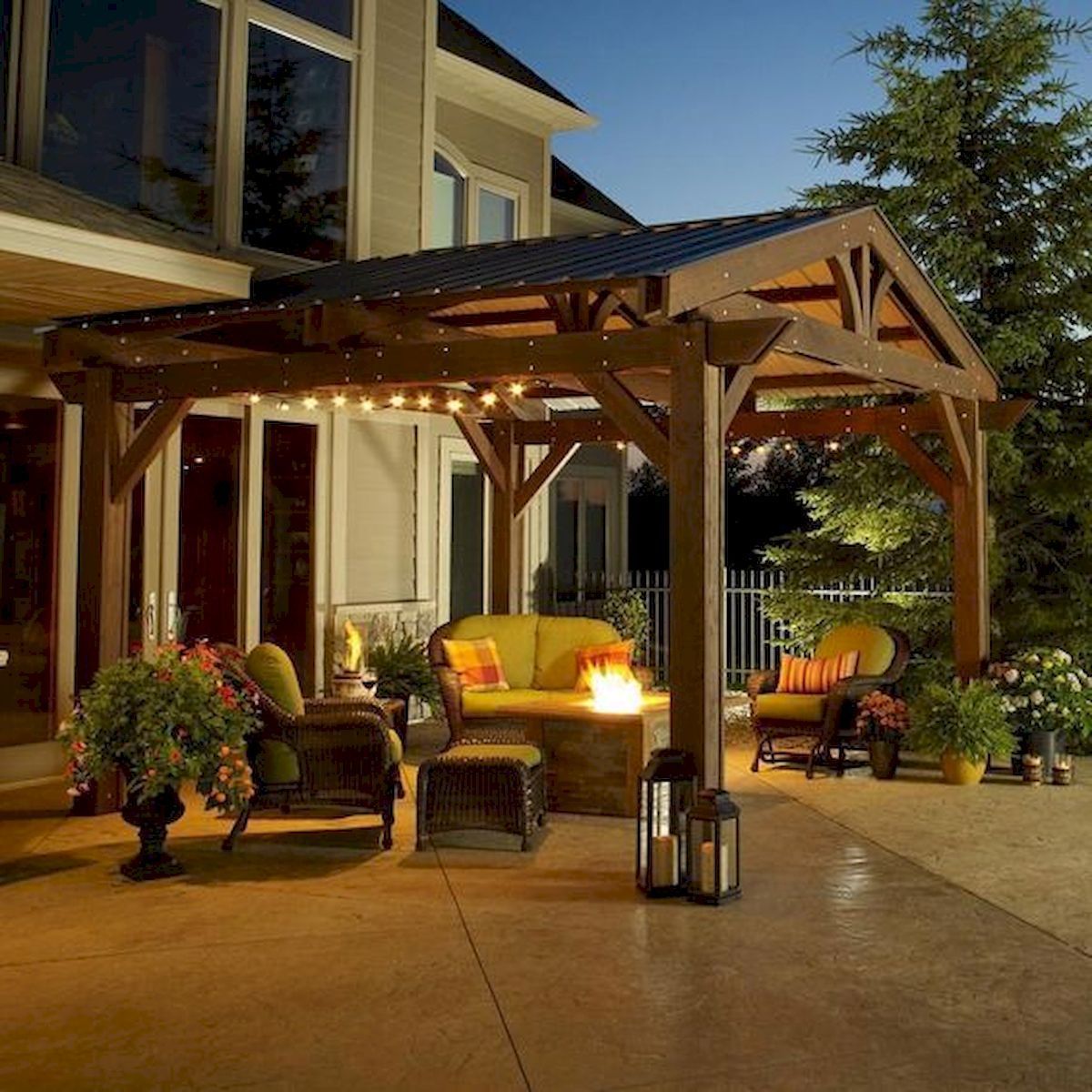
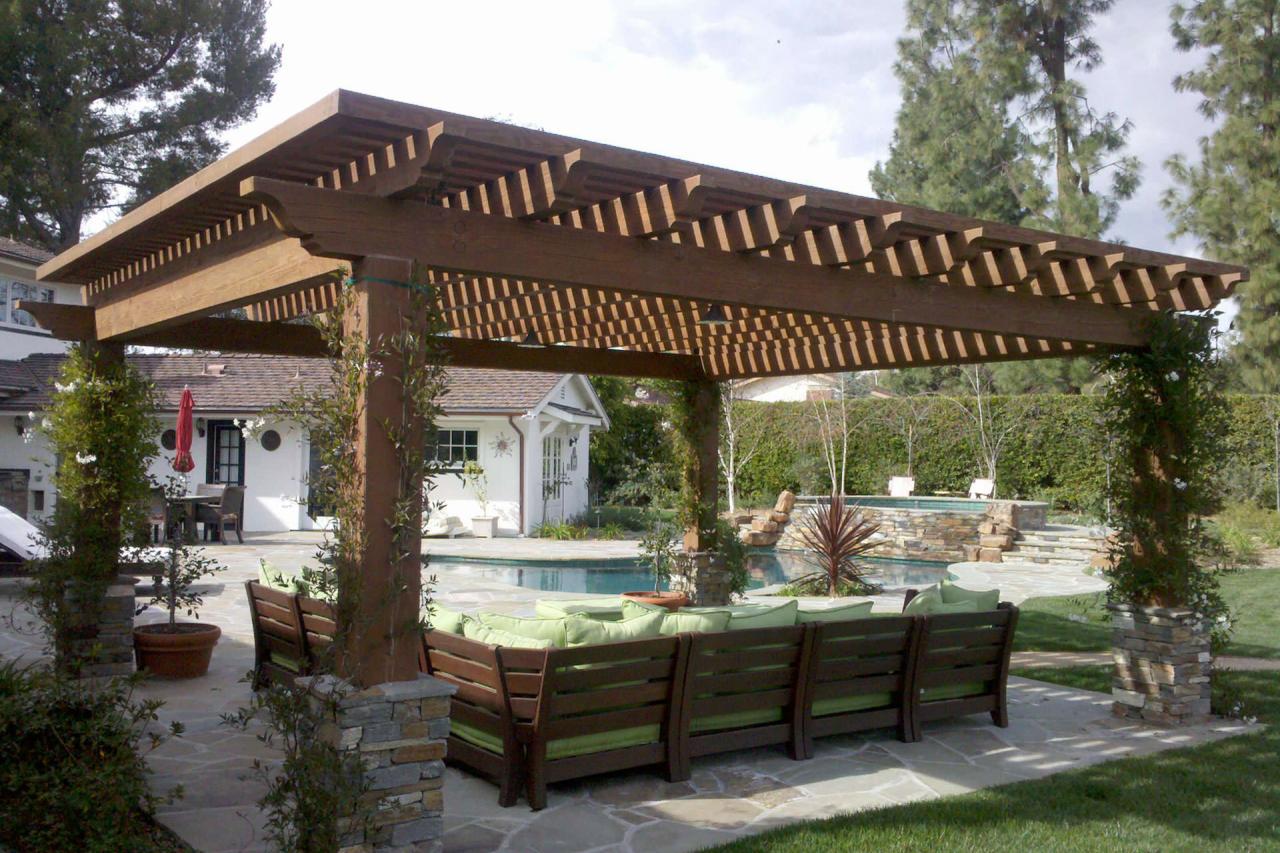
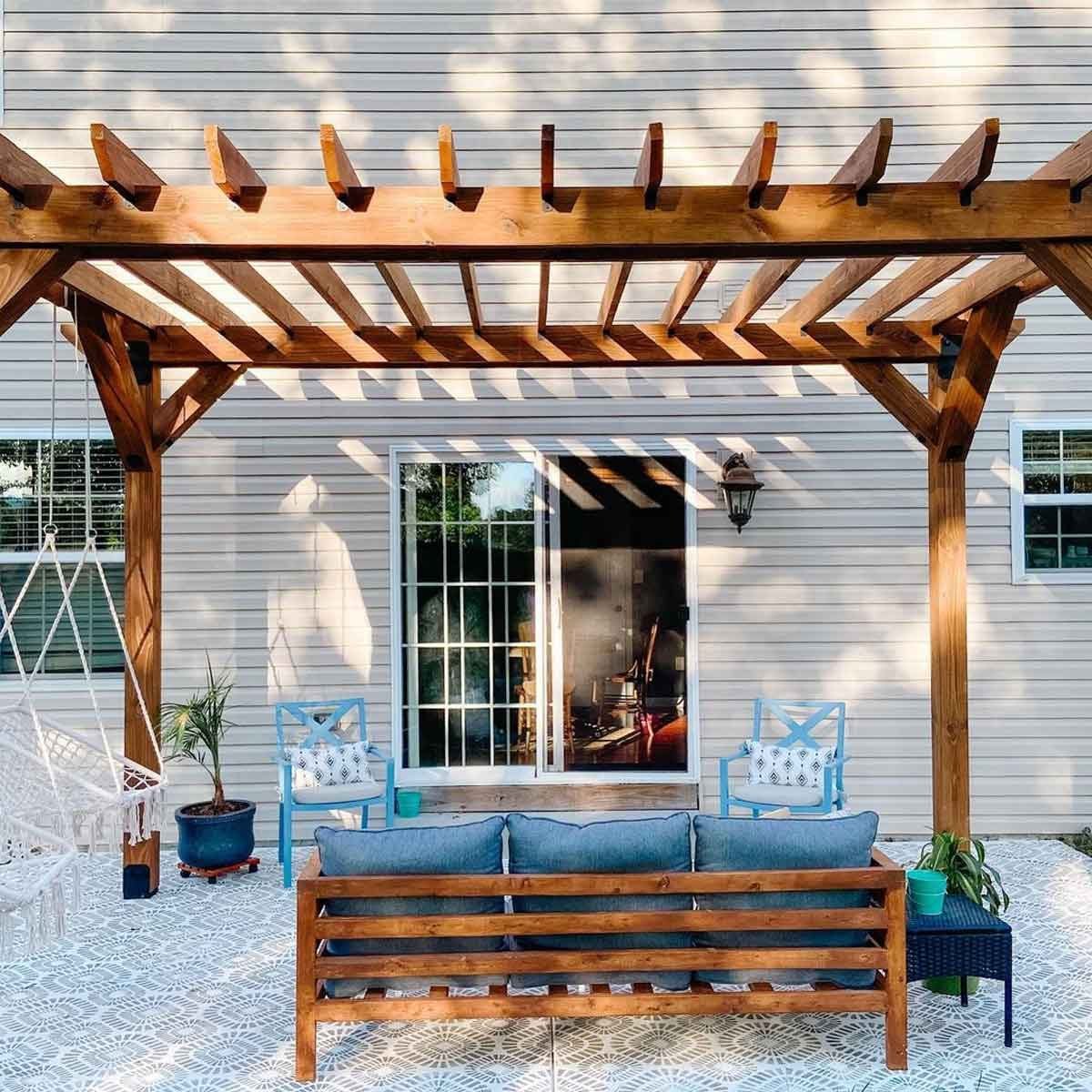



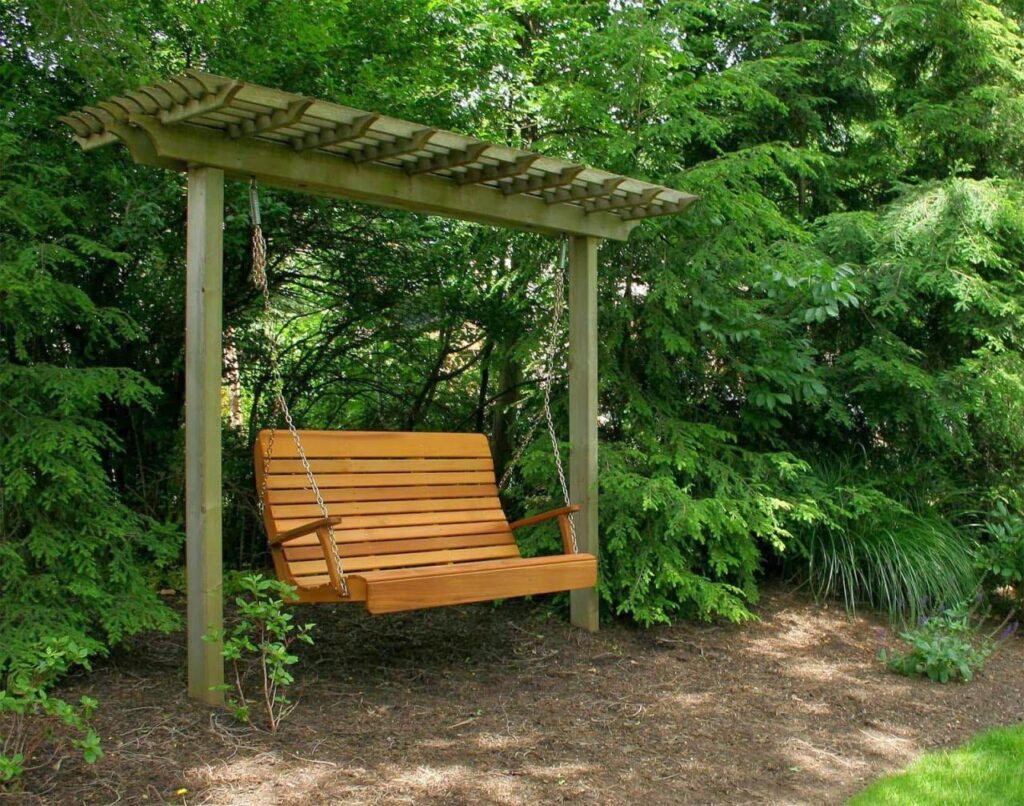

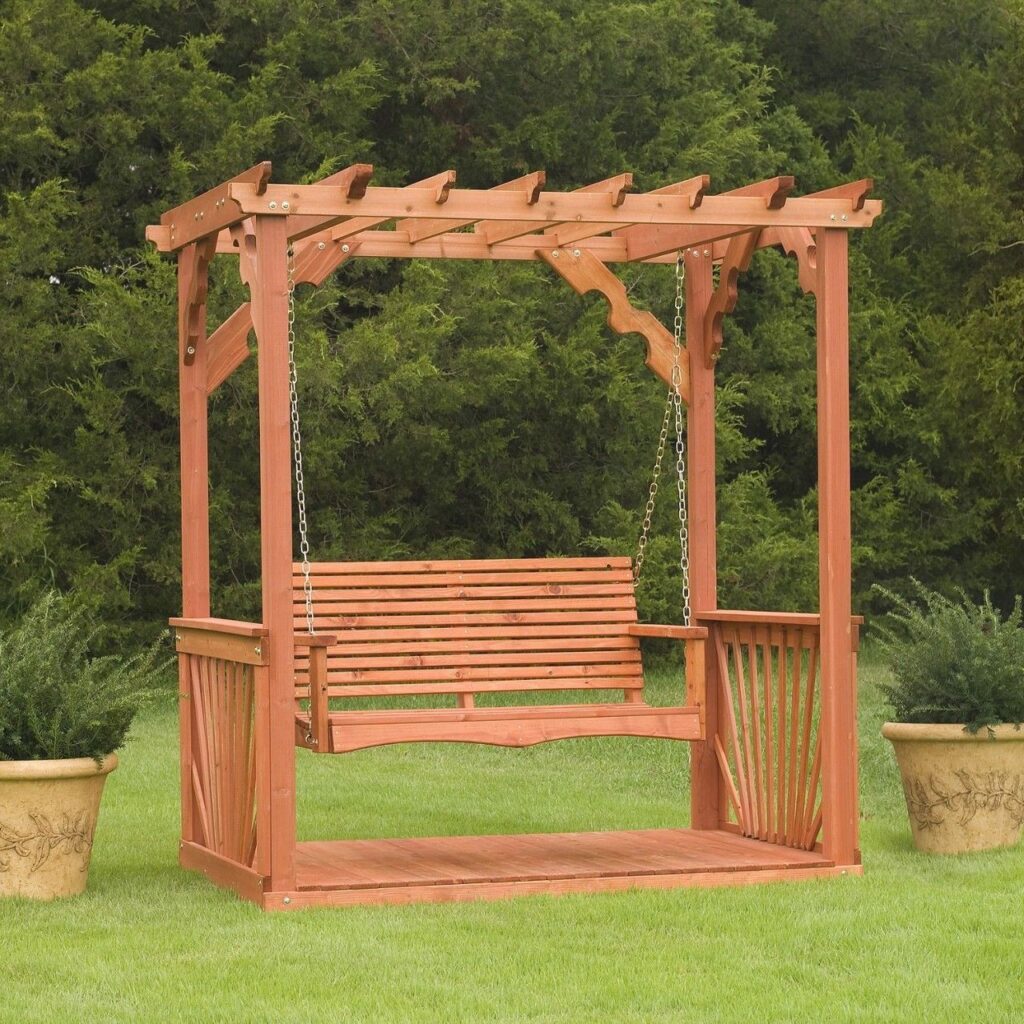

3 thoughts on “Covered Pergola: Enhance Your Outdoor Living”